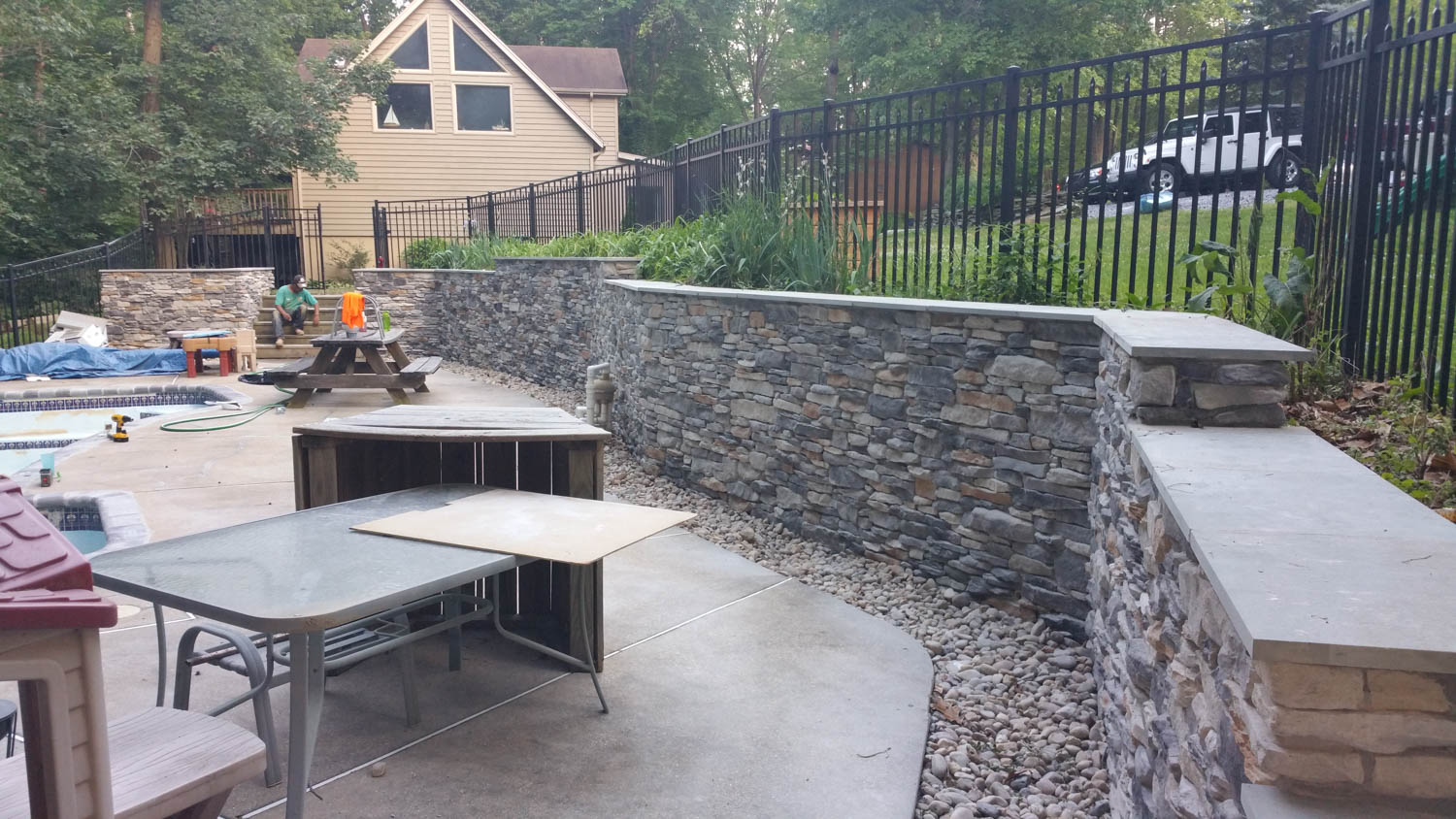Retaining Wall And Garden Wall Construction - Questions
Wiki Article
The Definitive Guide to Retaining Wall And Garden Wall Construction
Table of ContentsThe Single Strategy To Use For Retaining Wall And Garden Wall ConstructionRetaining Wall And Garden Wall Construction - QuestionsGetting The Retaining Wall And Garden Wall Construction To WorkRetaining Wall And Garden Wall Construction Things To Know Before You Get This
If this gradient is not controlled, the wall surface will relocate or fall short. Rain that escapes the top of a maintaining wall can damage the dirt and plants on either side, eroding them away. Drainage systems divert this water from susceptible locations, minimizing the effect to the structure and also its surroundings.It's been said half of all the issues with retaining wall surfaces involve drainage and also water problems, and also keeping water out of these wall surfaces is a big one. If it's completely dry, there's little to no chance any type of plant life can take hold - Retaining Wall And Garden Wall Construction. An effectively created and installed system will keep your wall completely dry, saving you cash on maintenance and replacement prices.
Load it with crushed rock or crushed rock. All preserving wall surfaces need to consist of water drainage stone even if a draining pipes pipe is not called for. Place filter textile over the water drainage stone and also listed below the topsoil. That prevents fine product as well as raw material from congesting the drainage rock. If your preserving wall requires a water drainage pipe, make certain the pipe has ports on all sides, not simply one.

Our Retaining Wall And Garden Wall Construction Statements
This damages can be expensive to fix, and also a properly set up drainpipe would certainly have avoided it (Retaining Wall And Garden Wall Construction).
A keeping wall is designed to hold in area a mass of planet or the like, such as the edge of a balcony or excavation.

These are cantilevered from a ground and surge over the grade on one side to preserve a greater degree quality on the opposite side. The wall surfaces must stand up to the lateral pressures created by loosened dirts or, sometimes, water pressures. Every maintaining wall surface sustains a "wedge" of dirt. The wedge is defined as the dirt which extends past the failing plane of the dirt type existing at the wall surface website, as well as can be computed once the soil friction angle is recognized.
The 8-Second Trick For Retaining Wall And Garden Wall Construction
This reduction reduces the pressure on the keeping wall surface. One of the most vital factor to consider in proper style and also installation of keeping wall surfaces is to identify and combat the propensity of the preserved material to move downslope as a result of gravity. This produces lateral planet stress behind the wall surface which depends upon the angle of inner friction (phi) and the natural strength (c) of the retained product, as well as the direction and size of movement the keeping structure undertakes.
Water drainage materials will reduce or get rid of the hydrostatic stress and improve the security of the product behind the wall surface. Drystone keeping walls are typically self-draining. As an instance, the International Building Ordinance needs preserving walls to be designed to guarantee stability against rescinding, gliding, extreme structure pressure and also water uplift; as well as that they be developed for a security element of 1. Various sorts of maintaining wall surfaces Building sorts of gravity retaining walls Gravity wall surfaces depend on their mass (rock, concrete important link or other hefty product) to withstand stress from behind and might have a 'batter' setback to improve stability by leaning back toward the preserved dirt. For short landscaping wall surfaces, they are frequently made from mortarless stone or segmental concrete units (stonework devices).
Diaphragm walls are expensive wall surfaces, yet they save time and space, and thus are made use of in urban building and constructions. Sheet stack keeping walls are normally made use of in soft soil Get More Information and tight rooms.
For a quick estimate the material is typically driven 1/3 above ground, 2/3 underground, however this might be modified depending upon the environment. Taller sheet heap wall surfaces will need a tie-back anchor, or "dead-man" positioned in the dirt a distance behind the face of the wall surface, that is tied to the wall, usually by a cable television or a pole.
Retaining Wall And Garden Wall Construction - An Overview
An anchored preserving wall surface can be constructed in any of the abovementioned styles but additionally consists of added strength utilizing wires or various other remains anchored in the rock or soil behind it. Usually try here driven right into the product with boring, supports are after that increased at the end of the cord, either by mechanical ways or commonly by infusing pressurized concrete, which expands to create a light bulb in the dirt.Report this wiki page